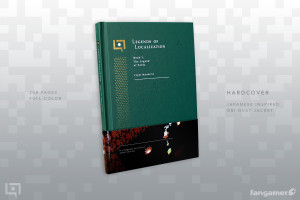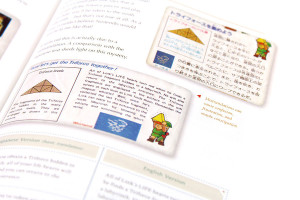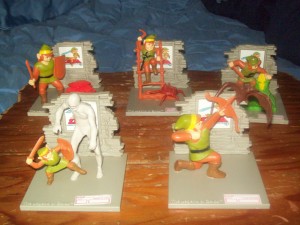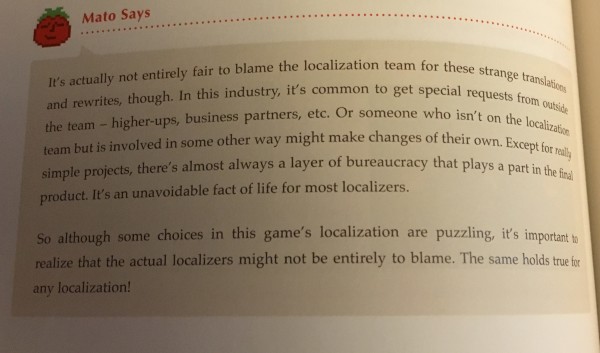I should preface this with, perhaps, an admission of potential bias: I think Fangamer is one of the raddest “nerd stuff” companies out there. Their merchandise is clever and classy, their clothing is nicely designed and high-quality, and they’re just a nice collection of really cool folks selling cool gear. They don’t put out books quite as often as clothing and accessories, but when they do, they’re usually pretty fantastic.1 So when Clyde Mandelin, well-known fan and pro translator, announced that he was going to expand on some of the material of his Legends of Localization site in book form, I was pretty hyped!
Though, I have to admit, I wasn’t horribly enthused by the initial choice of focusing on Zelda I. There really wasn’t a whole lot of text to the game, after all – how could you possibly fill up a 200-page book about it? As it turns out, however, there’s a lot of interesting ground to cover in localization that extends beyond just in-game text, and Mandelin’s book goes into all of it in great detail.
So, let’s get right to it – here’s a review of Legends of Localization, Book 1!
Images used in this piece are a combination of my own and promotional images from Fangamer’s website. The latter should be easy to distinguish with the watermarks!
One thing I can always count on with Fangamer stuff is high production value. These folks seem to genuinely care about giving you the bang for your buck, selling well-designed and well-made goods that feel like they were created with a lot of affection rather than a cheap meme slapped on a shirt or poster for some hot nerd dollar. The moment you pick up the book, you feel that Fangamer quality: it’s hardbound, the cover decorated with embossed lettering and gold foil accents. The insides are printed on heavy, high-quality color paper that’s a cut above your average print stock. There’s even an obi like you’d see on many Japanese books…
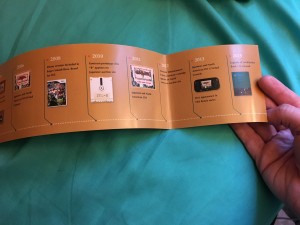 But what’s super cool about the obi is that it’s double-sided! On the reverse is a timeline of various re-releases of Zelda I since its initial debut in 1986. What a clever idea!
But what’s super cool about the obi is that it’s double-sided! On the reverse is a timeline of various re-releases of Zelda I since its initial debut in 1986. What a clever idea!
As cool as the initial presentation is, the adage is that you can’t judge a book by its cover, so let’s dig a little deeper into the text. The book begins with an introduction to the Legends of Localization concept, followed by some details about Mandelin’s personal experience with Zelda and what the game means to him – basically, justifying why he picked this game over others to do a book about. His words about the mystique and allure the game held for him as a youth will resonate with anyone who idolized particular games when they were younger – they certainly did with me!
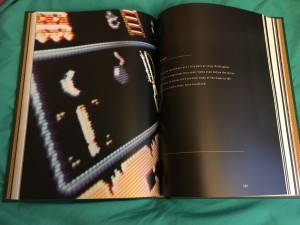 Each section of the book is separated by one of these stylish super-closeup-CRT-on-black screenshot images and a brief blurb. It’s a neat, artsy little way to go from one section to the next. (My one problem with these images, however: the paper stock is the type that attracts finger oil like flies to honey, so if you’re not turning the pages in a super-dainty manner you are going to leave very conspicuous fingerprints all over these bits. Be careful!)
Each section of the book is separated by one of these stylish super-closeup-CRT-on-black screenshot images and a brief blurb. It’s a neat, artsy little way to go from one section to the next. (My one problem with these images, however: the paper stock is the type that attracts finger oil like flies to honey, so if you’re not turning the pages in a super-dainty manner you are going to leave very conspicuous fingerprints all over these bits. Be careful!)
The in-depth looks at various aspects of the game begins with analyzing the game’s audio. Zelda was ported to the NES from the Famicom Disk System, which had an additional audio channel, so some elements of the music and sound effects had to be adapted in the game’s voyage overseas. Soundwave images of particular songs and sound effects are compared side-by-side, with a bit of text analysis. There’s even a little section where he asks players from Japan and the US to listen to the theme music from the other territory and give their thoughts, which is a neat idea. However, this is probably the weakest portion of the book overall due to the medium’s inherent limitations.
Next up are the graphics: Mandelin points out the new title logo, the changes in fonts across the various editions of the game, and other bits like touched-up sprites. It’s very interesting, though Zelda I’s graphical alterations are pretty minor overall. The next section, Gameplay, is where things start to get really cool, though: Mandelin discusses things like how the method for defeating Pols Voices needed to be altered due to hardware differences (Famicom controllers have a microphone built in!), the infamous “Swatiska dungeon” (actually a manji), even an obscure trick in the first FDS release of the game that could net you a bunch of extra heart containers fairly easily – among lots of other things.
Then it’s on to the First and Second Quests, and the various text contained within. Interesting facts abound here: some of the shopkeepers used Kansai dialect in the original Japanese version (which the translators tried to approximate in English), the “it’s a secret to everyone” Moblin might actually be bribing you to spare his life, and numerous hints have been changed entirely from their original Japanese for reasons seemingly unknown – and there are a few clues that don’t really make sense in either language.
 This look into early Japanese-to-English language localization is lots of fun to examine, particularly puzzling out the hows and whys of particular changes that happened in the process. We’ll probably never know why the translation team wanted to tell us about an obscure bomb-collecting mechanic over hinting at an important item, but it’s amusing to theorize, at least!
This look into early Japanese-to-English language localization is lots of fun to examine, particularly puzzling out the hows and whys of particular changes that happened in the process. We’ll probably never know why the translation team wanted to tell us about an obscure bomb-collecting mechanic over hinting at an important item, but it’s amusing to theorize, at least!
Items and enemies are next up for examination. Some changes and naming choices are obvious (the “Bible” in Japan became the “Book of Magic”) in the west, while others are head-scratching (read the description on where the name “Like Like” came from, it’s pretty amazing). Mandelin does a good job here of showing how many initial naming conventions would carry on to later games in the series, and how a few would get revised later on.
The next section, on the game’s manual and supplementary material, is a nice look at how localization extends outside of the game itself. There are some notable discrepancies between the manual and the game translation, which Mandelin theorizes is the result of two different translators, one working on each portion. Consistency is something every good localization needs, after all! The comparison of the English and Japanese manuals reveals some other fun quirks, such as that Manhandla is apparently a further evolved Piranha Plant from Mario.
My personal favorite section of the book is labelled “Beyond the Game.” Here, Mandelin describes other interesting Zelda-related tidbits: a rare Japanese version given out as a prize from a ramen company, some of the various prototypes that are known to exist, BS Zelda, the various LCD game adaptations, even a comparison between Japanese and English board games based on the title! Things mostly wrap up after this, but in an amusing little twist, Mandelin left a few pages blank for potential physical “update patches” covering non-English versions and future re-releases.
Throughout the book, Mandelin talks about things that might seem unrelated at first but actually play a big part: the use of English in Japanese games, various regional dialects of Japan, and other bits. These help provide context to folks who might not be well-versed (or versed at all) in Japanese language and culture, and I really like that he made the effort to put these in. Mandelin’s little jokes and asides are amusing, too, and he’ll often post minor digressions and factoids about localization in general that help readers learn more about the art of game translation.
Overall, I’m exceptionally satisfied with the book. The presentation is spot-on and the content goes above and beyond in detailing the elements of localization you might not have even thought about. If there’s one major criticism I have, it’s that I would have either reduced or eliminated the sound section. Seeing comparisons of soundwaves simply doesn’t do much in a strictly visual format, and Mandelin acknowledges this: at the beginning of the section there’s a QR code to access a website that does have sound files. I feel like the pages could have been put to better use showcasing other stuff: at one point Mandelin shows a picture of various Zelda-related merchandise he’s acquired. Why not a bit more focus on that? Certainly the merchandising aspect is worth talking about – I’d wager there were probably more Zelda goods in the US than in Japan!
The book’s a little expensive at $29, but between the presentation and the content, it’s very well worth its asking price. (I didn’t get the version that includes the Zelda Passport, a mini-book that’s meant as a Japanese learning guide for those playing the Japanese version of the game, so I can’t comment on that.) There’s also a card inside you can mail in to suggest game titles to look at for future installments in the series. At one point, Mandelin teases us with the idea he might write a book about the Japanese version of Bubsy, so I think everyone who buys this knows that we must have him make good on that – so send those cards and e-mails! (He also suggests Shadowgate, which is kusoge status in Japan for very good reasons – I sincerely hope that comes to fruition!)
I’ll wrap this up with some truth bombs about localization from the author:
- With the noted exception of SMB3 Brick by Brick, which I was so disappointed by that I vowed to start reviewing gaming books – and here I am! ↩

